by Texas Homesteader ~
How do you make compost? What can be composted and what cannot? What kind of container do you use?
There are lots of different answers and methods to those questions. I’m sharing easy composting tips below.
(Note: Some links in this post will take you to other related articles for further information. But links preceded with * are affiliate links. If you click and buy something I could receive a tiny commission.)
Is Compost The Same As Fertilizer?
Well, yes and no. Compost does include vital garden nutrients including nitrogen, phosphorus and potassium. But probably not enough to meet the needs of your veggie plants.
Think of compost more as a soil amendment than a fertilizer. Compost improves your soil for a healthy garden:
-
-
-
Increase Soil’s Ability To Absorb Nutrients
-
Improves Soil Texture
-
Loosen Soil To Repair Soil Compaction
-
Feed Earthworms & Other Beneficial Organisms
-
Results In Active Healthy Microorganisms In Soil
-
Improve Drainage of Clay Soils
-
Improve Water Absorption Rate of Sandy Soils
-
-
Healthy soil dramatically improves the health of your garden plants.
But although compost is often referred to as ‘Black Gold’ in the garden, you’ll still need to add appropriate applications of fertilizer in your garden for the best harvest results.
No Need To Buy Compost – It’s EASY To Make Yourself!
It’s beyond easy to make compost yourself for FREE! Food scraps go into your compost pile (and then ultimately to increase your garden harvest) instead of just rotting a landfill.
It’s eco friendly, simple to do, good for your garden and saves you money too!
What Containers Do I Use For The Composting Process?
All organic matter will eventually decompose. And in that decomposition will result in rich healthy soil full of beneficial bacteria.
There are many containment options for making compost:
-
-
- Open-Ended Wire ‘Barrel’
- Cement Block Frame
- Frame Compost Area With Logs
- Use Wood Pallets to Frame your Compost Area
- 3 Hay Bales For A 3-Sided Composting Area
- Purchased *Stationary Compost Container
- Rotating *Compost Tumbler
-
I have a Lifetime brand compost tumbler that I purchased several years ago and I love it.
Drawbacks of Stationary Compost Bins
In past years I’d just used an open-ended barrel shaped from chicken wire. While it was effective in accumulating my composting materials, it was difficult for me to turn the compost properly.
Because I didn’t turn it as often as I should the compost was too slow in completing the composting process to suit me. (although it was obviously my lack of action that was the problem.) It’s much easier with a tumbling composter.
Why Do You Need To Stir Compost?
Turning compost is very important in the composting process. The pile needs to be turned often to properly redistribute the compost materials & moisture as well as add oxygen.
So these days when my scraps go into the tumbler I give it a quick turn and walk away. Easy!
What Can You Add To Your Compost Pile?
You may wonder what can go in the compost pile?
Your compost needs both “greens” and carbons, or “browns” to work properly.
Compost Greens (Nitrogen Rich, Compost Quickly):
-
-
- grass clippings
- carrot tops
- apple cores
- banana peels
- egg shells
- coffee grounds
-
Compost Browns (Carbon Rich, Feed Soil-Dwelling Microbes):
-
-
- black & white newspaper
- toilet paper rolls
- used tissue or paper napkins
- waded black & white paper
- dry leaves
- coffee filters
-
This is only a quick list of examples but there are LOTS of things around the house that can be composted.
Composting Tip: The smaller the pieces you place in the compost, the quicker it will decompose. So chop the larger pieces up if you can.
What To Avoid In Your Compost Pile:
There are a few things you don’t want to add to your compost:
-
-
- Meats / bones (attracts vermin)
- Waxy paper (slow to decompose)
- Dog or Cat Feces (can include toxic parasites)
- Weeds with seeds
- Grease or fats
-
Proper Mix of Greens & Browns For Compost
The generally-accepted percentage is to add three parts browns (or carbons) to one part green (or nitrogens). But it doesn’t have to be exact.
- Too Many Greens: If you add too much nitrogen your compost may begin to smell. Simple fix – add some carbon items such as cardboard, paper, dry leaves, etc..
- Too Wet: Also if your compost is too wet it may also begin to smell. You want it only lightly damp like a wrung-out sponge.
- Too Many Browns: If you have too many carbons your compost will slow down its composting progress. Again, simple fix – add nitrogen items and/or water.
Don’t forget to turn it often to keep it all properly mixed and to add that important oxygen.
Does Compost Stink?
Some people might be concerned there could be a bad smell to compost. I mean, it makes sense, right? You’re rotting things after all.
But no worries, properly balanced compost will not smell bad at all. Actually it will smell like deep rich healthy soil.
It’s easy to keep the compost balanced. In with my kitchen scraps and grass clippings (greens) I add some Dried Leaves, shredded paper or cardboard (browns)
For me almost anything goes for the browns. I’ve composted dry leaves, wadded up bank statements, non thermal paper receipts, torn up cardboard pizza boxes and toilet paper cores from the roll. I even add RancherMan’s hair when I give him a haircut.
I’ve read that most inks used now are soy-based so I don’t really fret too much about what kind of paper goes in the composter, although I shy away from heavily-colored and slick-textured papers and thermal-paper receipts “just because”.
Don’t forget to stir your compost often to distribute oxygen. And add enough water so it’s slightly moist.
How moist? Well most definitions refer to it as being similar to the moisture of a wrung-out sponge.
Rodents, Flies & Other Pests & Composting
What about rodents, flies and other pests being attracted to your compost pile?
Avoid adding any meat, grease, milk or fat products and that definitely should help avoid that issue.
But a properly maintained compost pile does not smell bad. And I’ve never had a rodent problem with any composting receptacle I’ve ever used.
But I guess depending on where you live and what you include in your compost your experience could be different.
If it’s a concern for you get an enclosed *compost tumbler. That’s what we use here where there’s all manner of wild critters roaming about. Composting has never been simpler.
Composting Is Just That Easy!
So what have we learned today?
Your compost needs a mixture of “greens” and “browns“, to be turned regularly and kept evenly moist.
No kidding folks, it really is as simple as that! So get out there and start your own compost pile – your garden will thank you many times over. Happy Composting!
~TxH~
Other Compost Articles
- Easy Composting Rules For A Healthy Garden
- Don’t Worry, Compost Doesn’t Stink
- Easily Adding Cardboard To Your Compost
- Using Manure In Your Compost
- Compostable Eating Utensils
- Compostable Toothbrush
See All Our Compost Articles
My Favorite Garden Hacks
Garden Planning
Seed Planting
- Planting Seeds In A Milk-Jug Greenhouse
- Planting An Indoor Greenhouse
- Repurposed Cardboard Seed-Starting Pots
- Easy Homemade Seed Tape
Soil Health
- Easy Compost For A Healthy Garden
- How Leaves Benefit Your Garden
- Using Manure In Your Compost & Garden
Garden Styles
- 3-Sister’s Garden – The Original Companion Planting
- Planting A Large Galvanized Trough
- Where I Found The BEST Raised Bed!
- Planting A Blueberry Bush In Rustic Galvanized Tub
Garden Plants/Harvest
- Stevia – Growing Your Own Sweetener!
- My Simple, Zero-Waste Herb Drying Setup
- The Lazy Gardener’s Plant List – Plant Once, Eat For Years!
- How To Tell When Watermelon Is Ripe
- Luffa A Surprising Zucchini Substitute!
- How To Grow The Best Tomatoes
Water/Irrigation/Drought
- Keeping Potted Plants Watered
- Repurposing A Coffee Can For Deep-Soak Watering
- 3 Rainwater Collection Systems We Use
- Cheap (or FREE) Wood Mulch For The Garden
- Using Vining Plants For Living Mulch
Weed Control
Garden Tips
- Tricking Birds AWAY From Your Strawberry Plants
- Propping Tender Seedlings
- Homestead Hack: Remember Where You Planted Seeds
- How I Use EcoBricks In The Garden
MORE Gardening Posts
C’mon by & sit a spell! Come hang out at our Facebook Page. It’s like sitting in a front porch rocker with a glass of cold iced tea – lots of good folks sharing! You can also follow along on Pinterest, Twitter or Instagram.
If you’d like to receive an email each time a new blog post goes live it’s EASY to
Subscribe to our blog!

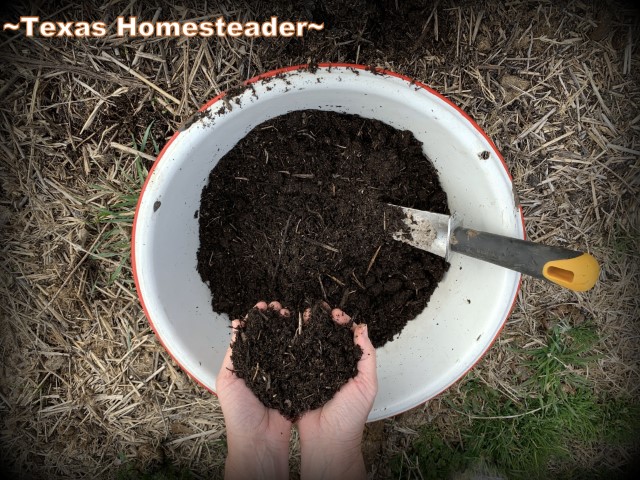
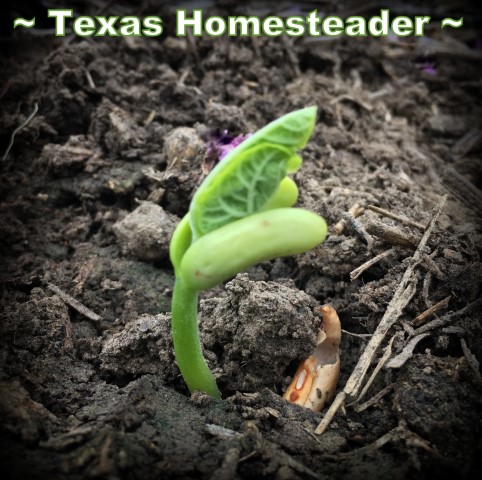
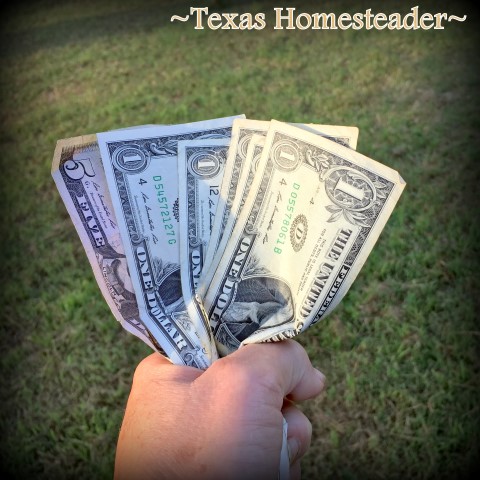
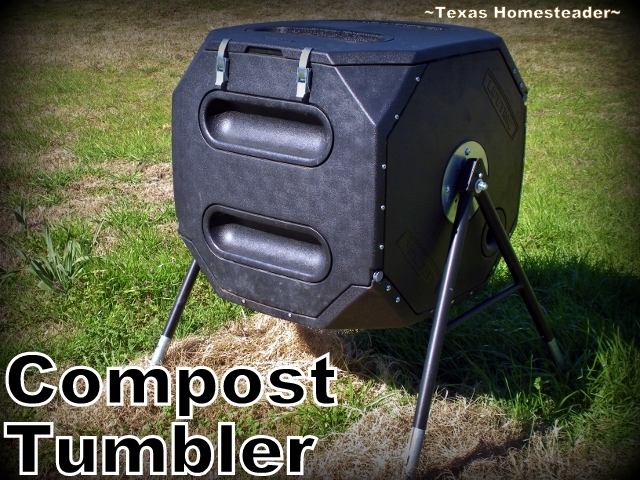
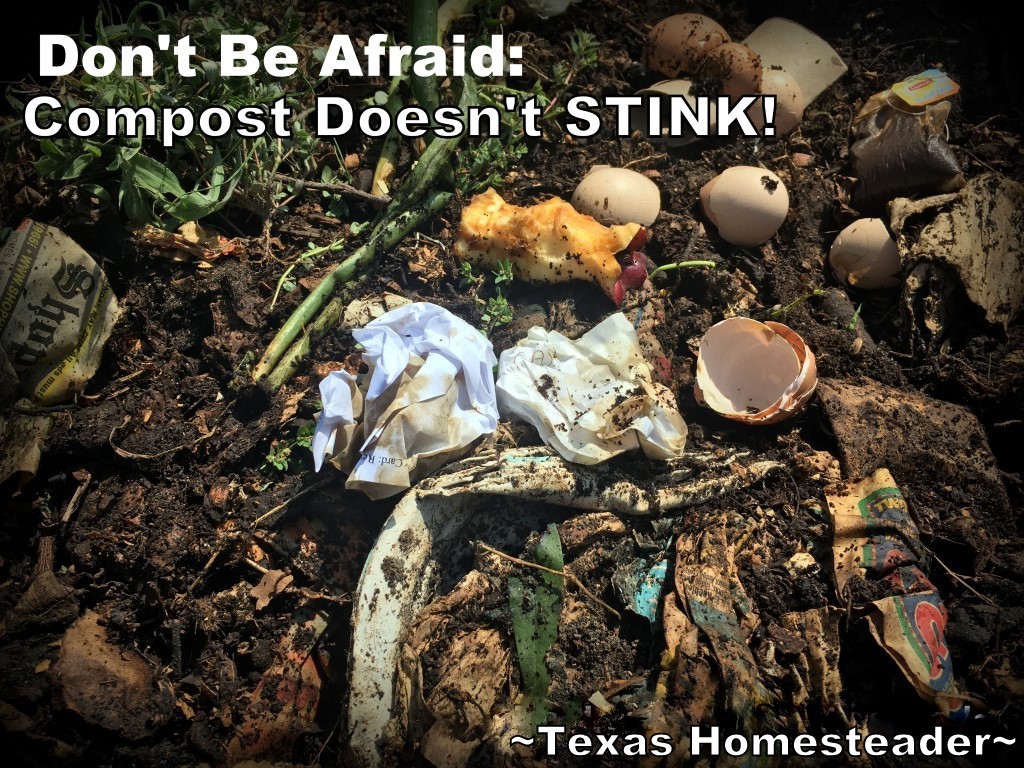
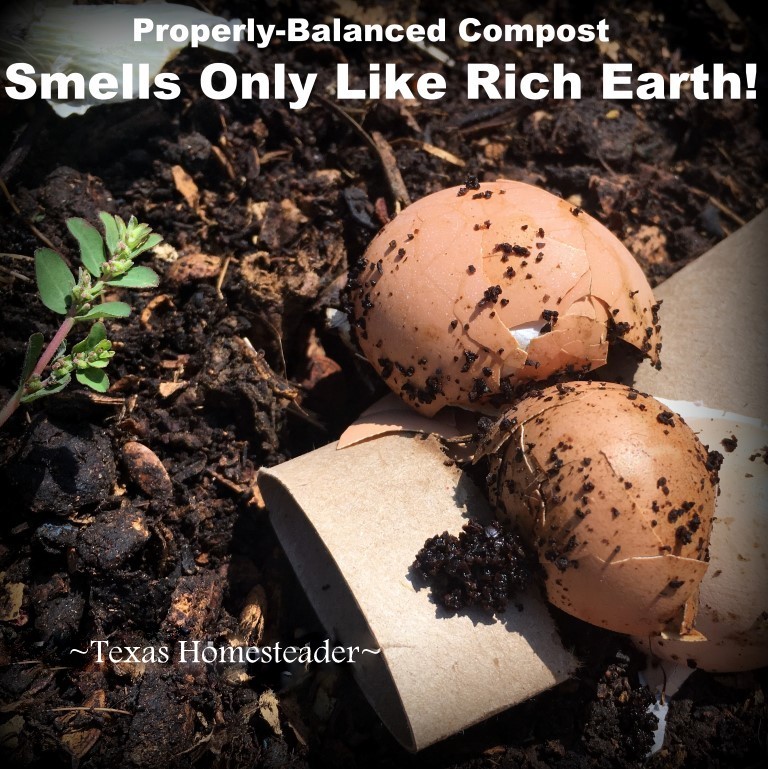
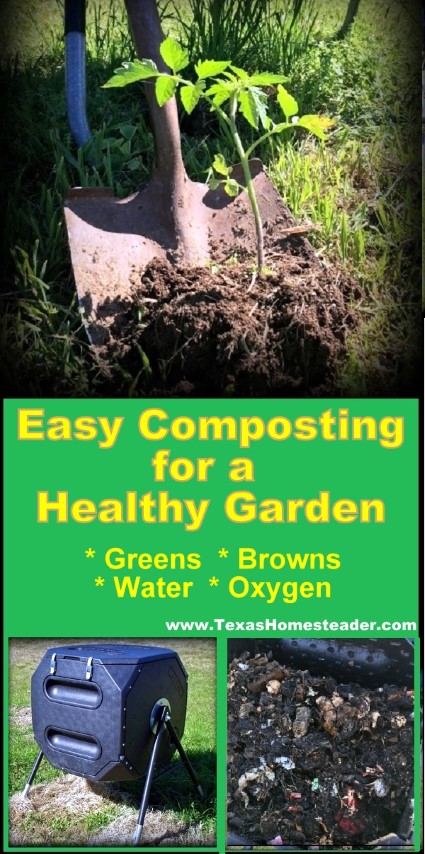
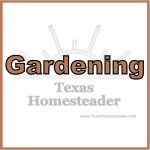
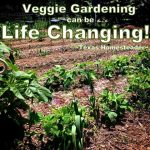

I just came across your website and have been on it for 2hrs now. You are a very knowledgeable lady and I have found all of it to be useful for a new Gardner. I do have a couple questions. I am going to get a tumbler so during the winter when I am composting where should I put the compost to save for my spring garden? Now on a separate note I had 5 cucumber plants and every cucumber we picked was bitter. It didn’t matter how much or how often I watered them they were all bitter what is going on. I had read something about to much nitrogen in my soil. I have already pulled them I was just so disappointed.
Hi Tina, I’m so glad you’re here! I have several tumblers so I rotate filling them and allowing them to rest & finish the compost process. But before I had so many I got a large 30-gallon lidded bucket, drilled some very small holes in the bottom and let the compost finish there until spring planting. Some people go ahead and place finishing compost into a fallow part of their garden. But I always use a large lidded bucket so that I could add compost into each planting hole instead of spreading it along the surface of my planting beds. Makes it go further for me. Regarding your cucumbers, water quantity can make them bitter as you mentioned, but heat can as well as allowing them to get too large. Often I can peel them if they’re not too large and I peel away the bitterness which seems to be mostly in the skin, so you might try that as well. When my cucumbers get too large I cut them in half and feed them to my chickens, they love them! It can be a crap shoot knowing which cucumbers to grow best in your area, but different varieties of cucumbers thrive in different conditions. Might check with your local extension agent for recommendations in your area. Happy gardening! ~TxH~
Great info and BTW, I love love love the header pic, that’s your own homestead, right?
Yessum Mel, that’s our barn & cattle in the header pic. It’s one of my faves, although to be honest I get lots of photo-worthy opportunity around this beautiful place!
I have been composting for about 4 years now. It really helps improve the hard Texas soil we have and my plants are growing a lot better.
Yes ma’am Kimberlee it does. We have a decent mixture of soils and thankfully we don’t have that Texas gumbo clay but our veggie garden was created right smack dab in the middle of a cow pasture so I wanted to add fertility to help my veggies grow.
I have been wondering about a composter. Right now mine is on the ground in cement blocks. I have a question. Do you put your stuff in to be composted until it is full and then stop until it is all composted before starting over again or how does that work? Also the reviews said that the parts (I think it was the parts) rusted. Have you had any problems with that? I think I want one but just not sure yet. Thanks. Nancy
Nancy, I’ve had no trouble at all with my tumbling composter & I think it’s the greatest thing since sliced bread! Since compost would not complete if it’s constantly being added to, I used to remove partially-composted material & set it aside to complete the composting process before adding again to the tumbler, but I recently built a finishing bed right in my veggie garden. I wrote about it here –> https://texashomesteader.com/building-a-garden-composting-area/
Thanks for your input. I don’t have enough room to do the partially finished compost like you do but what do you think of this idea? Might it work? Fill the compost tumbler as full as I am allowed. Then any extra compost after that put in my cement block open container I use now until the compost in the compost tumbler is finished. When it is finished empty that around my plants and fork the coment block started compost into the tumbler and continue to add to tumbler till full again. Input about this way please. I just have a small city lot but love to garden. Would love to have a tumbler like yours. Nancy
I’d suggest doing it the other way around – fill the compost tumbler as full as allowed then empty no more than 75% of it to a bucket with holes punched in it to allow drainage. The compost can then finish composting in the bucket and you can continue putting compostables into your tumbler. The reason I’d do it this way is because the compost tumbler already contains the microbes & beneficial bacteria to keep the composting process going. Plus you can use the finished compost from your bucket which is smaller than your tumbler & might be more convenient. At least that’s the way I was finishing my compost before we built the compost bed and although the finishing bucket worked well, I was looking for a way to finish my compost right in the garden area so we built the compost bed. So far, so good!
I just bought two 55 gallon plastic barrels to make my own compost. The hubby is going to build frames for them so they are off the ground and easily flipped (turned) as often as needed. Thanks for the suggestions on what to put in your compost, it really helps me. Do you now turn it every day when you throw something new in it? Thanks!
Yes ma’am Holly, I turn it every time I dump something in there. I don’t think it’s possible to OVER turn it but I know for a fact it’s possible to UNDER turn it. Turning it this often keeps all the clumps broken up and ultimately makes the tumbler easier to turn.
The only inks you really have to worry about these days are the metallic or fluorescent ones. Everything else is soy-based or aniline dyes, which are nitrogen-based and breaks down readily in a compost pile. The slick paper breaks down more slowly because the kaolin clay coating repels water, but if you rip the paper up to make fuzzy edges to the bits, it will absorb water that way and the bits will break down faster than a full sheet will. The coating won’t hurt anything because hey, it’s clay. You’ve got that in your dirt already anyway.
Great post! I got a tumbler in April and honestly didn’t have a clue how to use it. It needs to be turned a few times a week? The directions (what little there were with my tumbler) said once every week OR TWO! Well, that explains a lot. Off to turn my compost.
Btw, my compost is smelling absolutely wonderful, if though I can see food stuffs breaking down- no nasty smells. Can’t wait to use my ‘black gold’ 🙂
Again, really great post!
Blossom – you’re gonna LOVE your tumbler! Yes, I usually turn it each time I toss in my compostable materials. I don’t think you can Overturn the compost so in my opinion the more often the better!
Very helpful! I have my compost on the ground but recently found my dog eating my ‘greens’. Now I see what you are using and that looks handy. My household trash has reduced so much since composting. Thanks for the info.
Gina – LOL. I guess leftover dinner plate scrapings and the like may be enticing to your four-legged friend. In your case you’d definitely need to enclose your compost pile some way. Chicken wire wrapped into an open tube may work, you’d just need to remove the tube from time to time & re-shovel your compost into your container to keep it mixed. Of course the compost tumbler works well too since it’s pretty fully enclosed but it comes with a higher price than the chicken wire option. There are a wide variety of options and prices for your to consider based on your needs. But never fear because composting is E-A-S-Y.